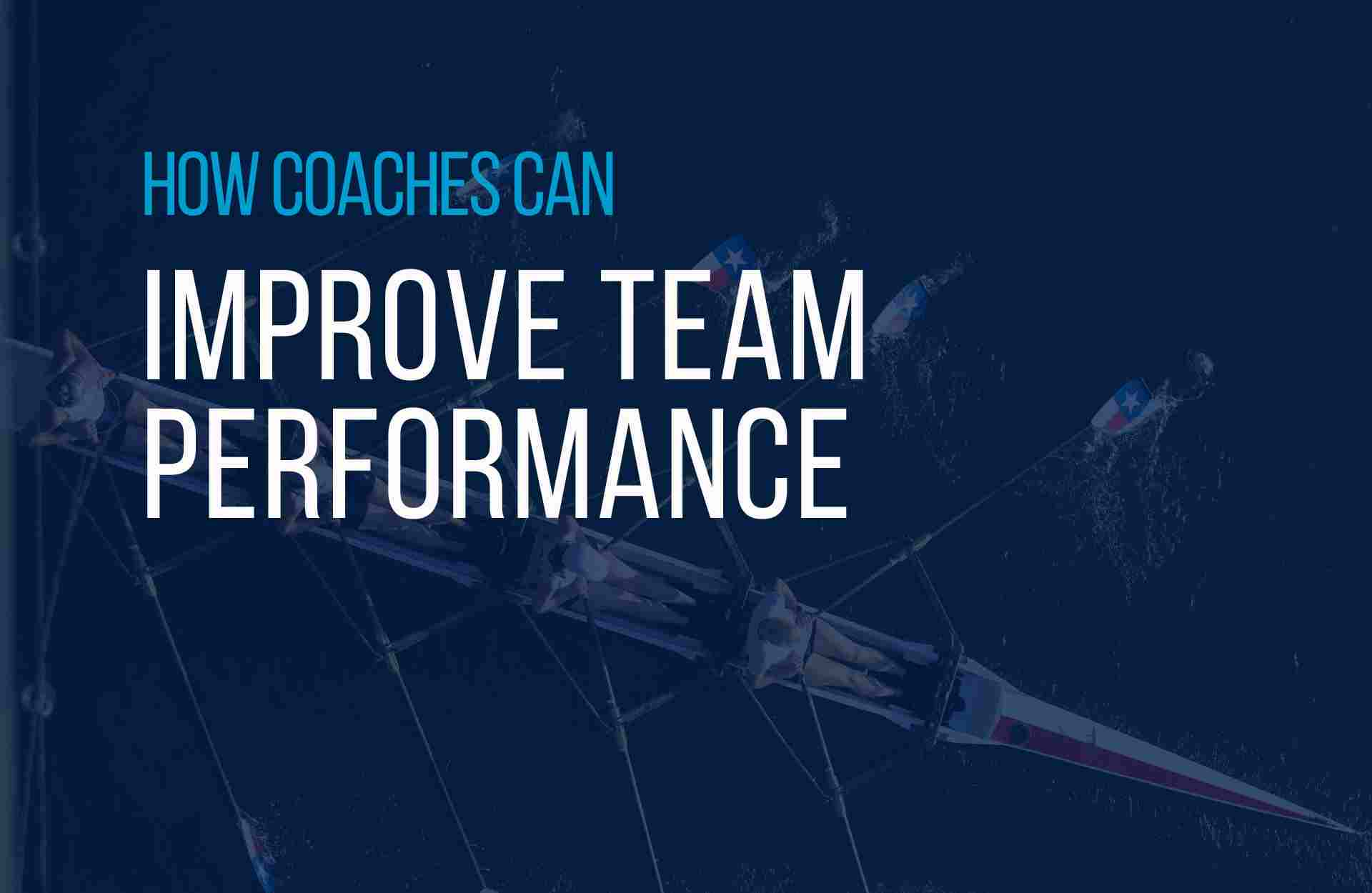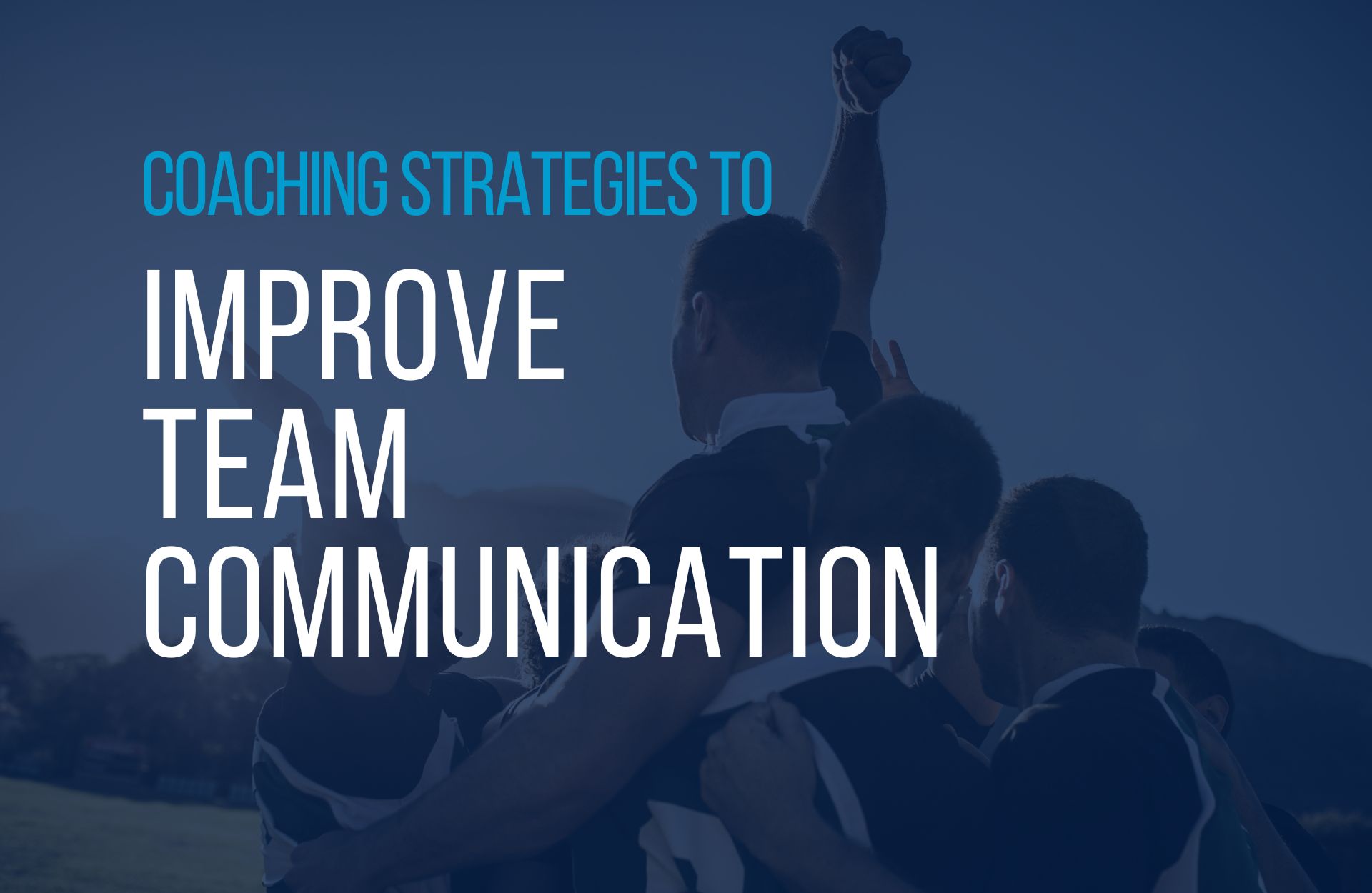How Can Coaches Improve Team Performance? 10 Evidence-Based Strategies


The role of a coach has never been more complex. Beyond designing plays and leading practices, today’s coaches are expected to be motivators, educators, compliance managers, and culture builders.
Success depends not only on talent, but also on the systems in place to support athletes and team members across academics, training, health, and communication.
In this environment, effective team coaching becomes a cornerstone of success. Well-structured coaching sessions, clear communication, and alignment around team goals can significantly enhance team performance, turning groups of athletes into high performing teams.
Coaches who focus on encouraging team members and creating the conditions for collaboration consistently see improved performance and the development of a successful team culture.
So how can coaches truly improve team performance in such a demanding environment? Research and experience point to evidence-based strategies that deliver results while protecting athlete well being.
Measuring What Matters in Team Performance
Understanding how a team functions requires more than looking at wins and losses. Coaches and administrators rely on key metrics that assess both individual performance and collective performance.
These measurements highlight where teams thrive and where targeted coaching strategies or innovative solutions are needed to move the team forward.
Important areas to evaluate include:
- Team dynamics and group dynamics: The quality of relationships, communication, and trust within the team.
- Alignment of team objectives and organizational goals with day-to-day activity.
- Evidence of continuous improvement and willingness to adapt or adjust strategies when needed.
- The ability to tackle challenges, resolve interpersonal conflicts, and develop problem solving capabilities together.
- Levels of team cohesion, mutual support, and mutual respect, which form the foundation of effective teamwork.
By monitoring these dimensions, leaders can assess progress, monitor progress, and identify whether team development initiatives, team building activities, or changes to coaching techniques are required for sustained success.
Coaching’s Impact on Team Effectiveness
Coaching is central to transforming teams into high performance units. The right blend of coaching style, coaching behaviors, and coaching strategies can dramatically shape team effectiveness.
Whether through individual coaching or broader coaching culture initiatives, coaches play a direct role in driving improved collaboration, problem solving, and alignment around shared objectives.
Strong coaches use:
- Constructive feedback and opportunities to receive constructive feedback to build trust and clarity.
- Active listening and emotional intelligence to resolve concerns and express concerns before they escalate.
- A balance of different coaching styles and coaching techniques to meet the needs of individual coaching and team-level growth.
- A commitment to personal development, professional growth, and self awareness among athletes to encourage a growth mindset.
- Integration of leadership skills and coaching culture practices that connect personal goals to team and institutional outcomes.
By integrating coaching into daily routines, teams not only enhance performance, but also develop the resilience to overcome challenges, align with customer expectations and organizational goals, and build a culture of continuous improvement.
The outcome is the creation of a successful team capable of adapting, innovating, and achieving sustained success over time.
1. Structure Training Sessions for Quality, Not Just Quantity
Evidence shows that well-planned training sessions are far more effective than long or repetitive workouts.
Coaches who carefully balance training intensity with adequate recovery create conditions for both peak performance and injury prevention.
Strategies include:
- Designing training programs with clear objectives for skill development, conditioning, and tactical execution.
- Monitoring training loads across athletes to avoid overtraining.
- Incorporating recovery periods supported by mobility work, sleep quality, and nutrition guidance.
By focusing on the quality of training plans, coaches can optimize performance without sacrificing athlete health. This structured approach also makes it easier to adjust training plans when athletes show signs of fatigue or elevated injury risk.
2. Leverage Data to Track Progress and Guide Decision Making
Modern coaching is increasingly data-driven. Whether through game statistics, practice evaluations, or athlete management tools, coaches can now base decisions on measurable evidence rather than instinct alone.
Key metrics to consider:
- Performance data from competitions and scrimmages.
- Athlete data related to attendance, effort, and consistency.
- Workload data across practices, weight sessions, and conditioning.
- Recovery metrics such as rest days, injury recovery times, or training responsiveness.
When coaches gain insights from structured data collection, they make better-informed choices about training sessions, roster rotations, and practice intensity.
These insights also improve communication with medical staff, conditioning coaches, and administrators, ensuring everyone stays on the same page.
3. Foster a Culture of Athlete Well Being and Mental Resilience
Research consistently shows that culture has a direct impact on team success. Athletes perform better when they feel supported, valued, and mentally prepared.
Coaches who prioritize athlete well being build teams that are resilient under pressure and less prone to burnout.
Practical steps include:
- Regular one-on-one check-ins to track academic, athletic, and personal challenges.
- Encouraging athletes to speak openly about stress, workload, and goals.
- Promoting balance by respecting off-days and reinforcing healthy recovery habits.
Make these steps a reality by building recovery and well being into the training calendar. Recovery is part of performance. Planning rest days, monitoring recovery metrics, and paying attention to sleep quality and workload distribution supports athlete well being and long-term human performance.
By addressing human performance holistically - mental, emotional, and physical - coaches cultivate stronger leaders and more connected teams.
4. Communicate Clearly and Consistently
Communication is a hallmark of effective coaching. Studies confirm that teams with transparent, structured communication are more cohesive and adaptable.
For coaches, this means more than pre-game talks. It requires:
- Using consistent channels to share schedules, expectations, and feedback.
- Providing instant feedback during practices to reinforce progress.
- Ensuring support personnel (trainers, compliance officers, administrators) are updated through shared systems.
- Leveraging digital platforms so athletes, staff, and coaches remain aligned across departments.
Clear communication builds trust. When athletes know where to be, what to expect, and how their performance is evaluated, they are more confident and prepared.
Beyond this, emphasizing team culture and creating a shared identity leads to improved results. Teams with a strong culture consistently outperform those without. Building rituals, reinforcing shared values, and creating a sense of belonging help drive team success and enhance overall performance on and off the field.
5. Use Evidence-Based Recovery and Injury Prevention Practices
Injury is one of the greatest threats to sustained team performance. Coaches can dramatically reduce injury risk by integrating evidence-based recovery and prevention practices into daily routines.
Best practices include:
- Tracking training loads to prevent overuse.
- Coordinating with medical staff to maintain accurate medical records and medical history.
- Building gradual progressions in training programs to match athlete readiness.
- Encouraging athletes to monitor fitness metrics like mobility, flexibility, and conditioning benchmarks.
- Supporting return to play processes with structured timelines and communication.
By embedding recovery and prevention into the team culture, coaches improve both short-term availability and long-term performance outcomes.
6. Tailor Training Programs to Individual Athletes
Every athlete responds differently to workload and intensity. By tracking athlete data and using simple monitoring tools, coaches can tailor training programs, adjust training plans, and create pathways that reduce injury risk while improving performance outcomes.
7. Align with Support Personnel Across the Institution
Coaches don’t work alone. Effective collaboration with medical staff, compliance officers, and support personnel ensures accurate medical history, eligibility records, and streamlined operations that keep everyone on the same page.
8. Integrate Technology for Monitoring and Communication
Modern coaching benefits from digital monitoring tools and centralized systems. Using a central hub for schedules, athlete data management, and communication helps coaches facilitate communication, track key metrics, and deliver actionable insights to athletes and administrators.
9. Focus on Leadership Development Within the Team
Empowering athletes to lead creates accountability. Giving captains and emerging leaders real responsibility helps teams self-correct in practices and games, while also preparing athletes for success beyond sports.
10. Encourage Continuous Learning for Coaches and Athletes
Performance improves when coaches and athletes embrace lifelong learning. Coaches who study advanced analytics, explore new conditioning tools, and adapt evidence-based approaches model growth for athletes, fostering resilience and adaptability.
Integrating These Strategies with the Right Tools
While these 10 strategies are evidence-based, their success depends on execution. The challenge for many coaches is not knowing what to do, but having the time, tools, and infrastructure to put it into practice. That’s where modern technology becomes a game-changer.
An athlete management system (AMS) provides the central hub for athlete data, compliance, scheduling, and communication. By unifying this information in one platform, AMS software reduces administrative tasks and gives coaches more bandwidth to focus on athletes.
How WinWon Supports Coaches and Teams
WinWon is more than software. It’s the infrastructure behind modern athletics operations. Our platform helps coaches, administrators, and medical staff stay aligned so they can improve athlete performance and build stronger programs.
With WinWon, coaches can:
- Access accurate athlete data management for eligibility, medical history, and participation.
- Stay on the same page with administrators and compliance staff through shared calendars and reports.
- Use built-in messaging to facilitate communication across athletes, staff, and support personnel.
- Simplify recruiting pipelines and integrate with admissions to ensure future team success.
By streamlining operations, WinWon gives coaches the most valuable resource of all: time. Time to lead, mentor, and focus on individual athletes. Time to build training programs that are evidence-based and sustainable. Time to strengthen the culture that drives overall performance.
Coaches know that improving team performance is all about aligning training, communication, compliance, and support. WinWon provides the software platform that makes this alignment possible.
Ready to see how WinWon can transform your program? Book a demo today and discover how our AMS software empowers coaches to optimize performance, protect athlete well being, and achieve lasting success.
Keep up with WinWon
See below for recent news and follow us on social media @winwontech
.png)
.png)
Park University Gilbert Partners with WinWon to Streamline Athletic Department Operations


Top 10 Coaching Strategies to Improve Team Communication
.png)
.png)
